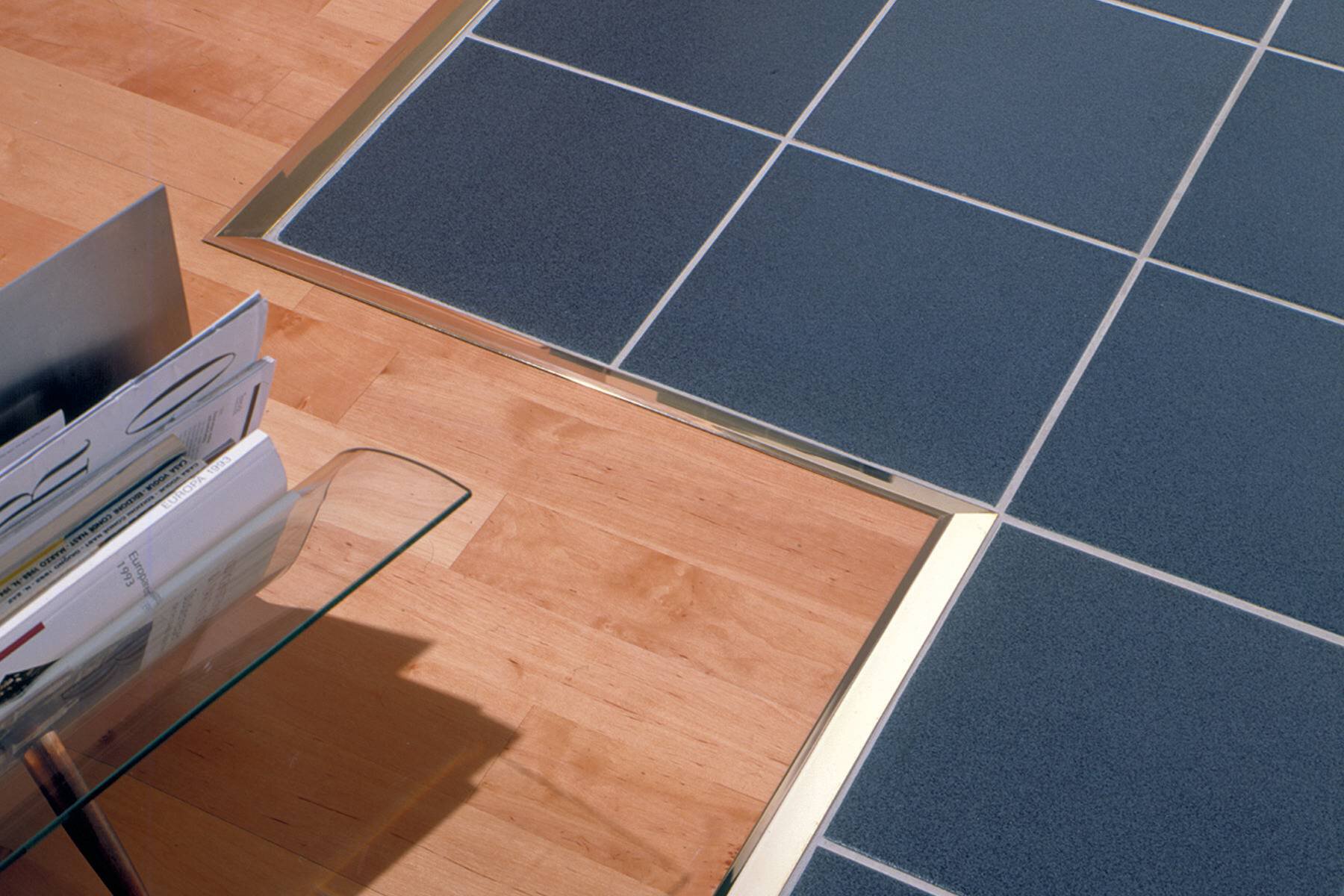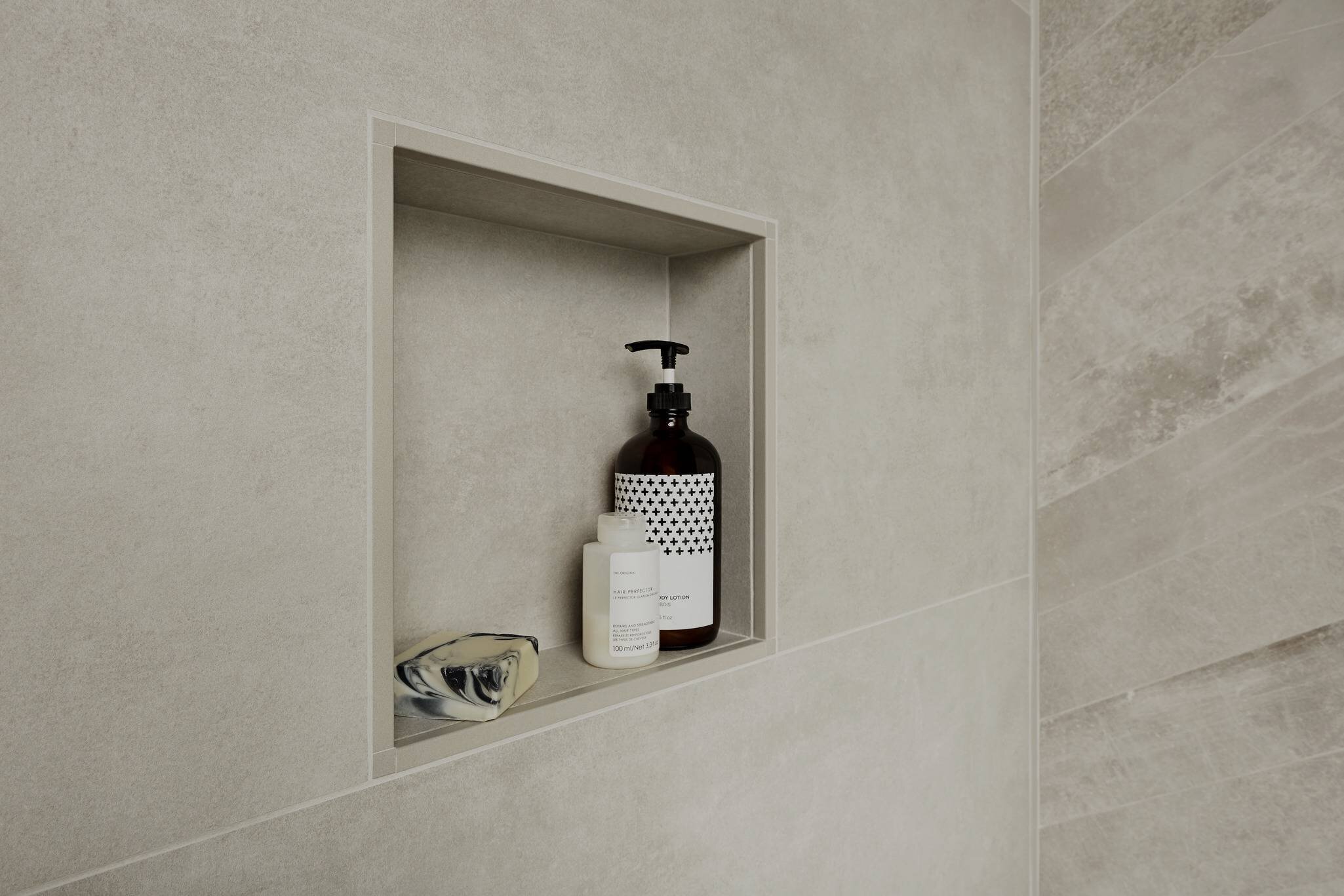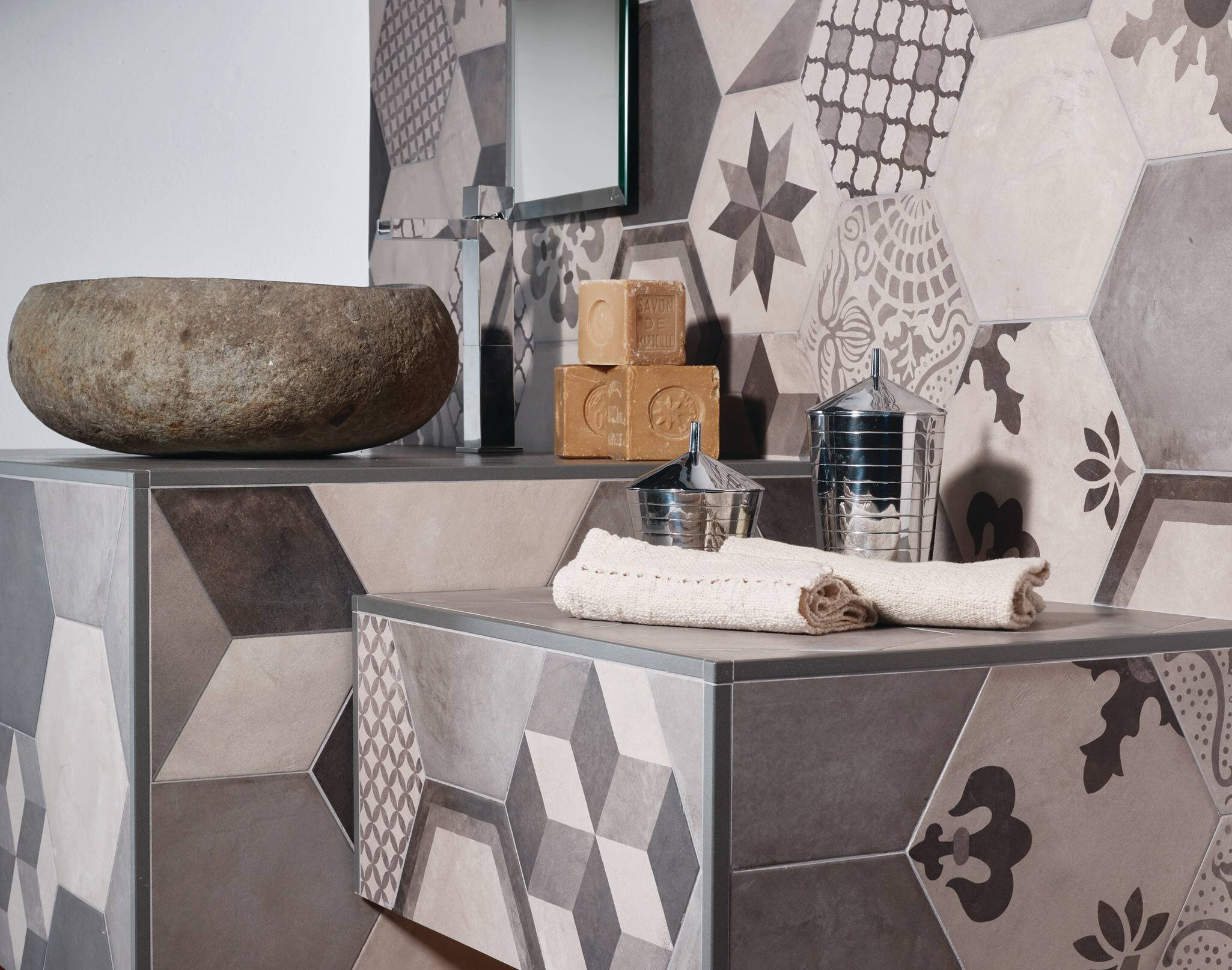What Is The Purpose of Tile Edge Trimming?
Ceramic and stone tile have been popular design choices for centuries, and there’s good reason for it. With renowned durability, low levels of required maintenance, and endless creative options, ceramic and stone tile are some of the most common coverings seen on walls, floors, and even countertops. When installed correctly with proper systems and techniques, these assemblies can last for decades – and tile edge profiles play an important role in a successful tile installation.


What is Tile Edge Trim?
Simply put, a tile edge trim, otherwise known as a profile, is a finishing edge that is positioned along the borders of a tile field during the installation process. Bonded under the tile with an anchoring leg, the profile is set into the same thin-set mortar as the tile and becomes a permanent part of the assembly.
Reasons for including tile edge trim in a tile assembly are two-fold. Firstly, using a metal tile trim along the unfinished border of any tile adds a layer of protection to the tile, which can help prevent tile from chipping or cracking. These problems are common in high-traffic areas such as floors or kitchen countertops. Installing a countertop tile edge trim saves tile edges from being chipped and is much more durable than traditional wood trim, while a floor profile protects tile edges and creates clean transitions to adjoining surfaces.
The other reason that tile profiles are used is esthetic. Available in a variety of materials, colors, finishes, and shapes, tile edge trim provides a multitude of design options, allowing for any space to be personalized. Whether it’s a backsplash edge trim that completes the tile assembly with a contrasting finish or a shower niche trim the blends into the tile field in a matching color, tile profiles maximize design potential by providing a beautiful finish to an otherwise unsightly raw tile edge.
What’s more, tile edge trim has numerous areas of use. In addition to floors, backsplashes, and countertops, profiles can also be used in wall applications as baseboards or wainscotting to add a decorative edge to the tile assembly. In bathroom settings, tile edge trim is common in shower niches and pony walls. There are even tile trims designed specifically for stairs.
Most tile profiles are a variety of metal edge trim. Schluter profiles are available in a large variety of anodized aluminum finishes, stainless steel, as well as powder-coated colors that can blend in with the tile. PVC options are also available for light-duty applications. If you’ve decided to use LVT flooring instead of tile, there are profiles for that too! Schluter’s LVT profiles are slim and discreet, creating a much more modern look than traditional wood or rubber edge trim.
Choosing the Right Tile Edge Trim for Your Needs
Not all tile edge profiles can be used in any situation. When choosing the right tile edge trim for any project, it’s crucial to consider a variety of aspects. There are specific profiles designed for various uses and areas. Whether it’s the size of the edge trim, its shape, or its material, there are specific tile edge trims for every application.
The first thing to consider is the thickness of the tile that requires the trim. Profiles come in a variety of heights, and most of the time the goal is to have the trim fit flush with the tile. If a profile is selected that is too tall for the floor tile being used, this creates a tripping hazard. On the other hand, an edge trim that is shorter than the adjacent tile won’t provide adequate edge protection. Choosing the right edge trim that corresponds to the thickness of the tile is the best way to ensure a smooth assembly.



Another area of consideration is practicality in design. The most popular areas for ceramic tile edge trims are floors and walls, and a variety of shapes exist to create the perfect look to go with any tile. Typical tile trim shapes include rounded edges, squared edges, or flat ones. You could also choose a profile with a sleek, minimalist reveal for a look that blends in, or choose something a bit wider to have the edge trim stand out. If you’re looking to add trim to an inside corner that has a habit of getting dusty, consider a cove-shaped profile that will lower maintenance requirements. Tile edge trims also help ease the transition between two floor surfaces. Certain profiles can act as a carpet edge trim, creating an elegant transition between a tiled floor and carpet.
Using tile edge trims can be a great way to assist with those who are aging in place. While it may not be the first thing that comes to mind, tile edge trimming can also help make spaces accessible to those with disabilities. Oftentimes when transitioning between a tile floor and an adjacent flooring, there is a height discrepancy. Choosing the right profile can accommodate this by creating a small ramp while also visually denoting a change in height, eliminating a tripping hazard. The same can be said of stair nosing profiles, creating a highly visible marker indicating the height of each step.

Installing Tile Edge Trimming
In most cases, tile edge trimming is installed simultaneously with the tile. An anchoring leg with perforations is adhered to the substrate using thin-set mortar, with a tile being placed over the anchoring leg. Once the mortar dries and sets, the edge trim is locked into place. Check out video below to watch how various Schluter profiles are installed in tile assemblies.
It is possible to install tile edge trim after tiling. While in most cases the edge trim is installed with the tile, there are certain profiles designed for retrofitting existing tile assemblies. These profiles are generally T-shaped, with the anchoring leg being set into the gap between the tiles and adjacent flooring. The top of the “T” covers the edges on both sides for a clean look.
Tile Edge Trim Inspiration
Tile edge trim profiles can be used to both complete and enhance a tile installation. Think of it like jewelry for tile: it can be the statement-maker or it can blend right in.
Final Thoughts on Tile Edge Trim
It’s clear that tile installations in residential and commercials spaces isn’t going away any time soon. With more and more options in tile shape and design becoming available every day, it’s easier than ever to create a space that is personalized to every taste. To ensure your tile installation lasts as long as possible, make sure to include tile edge trim in your project: you’ll preserve the integrity of the tile, and be able to give it the exact look you want.



